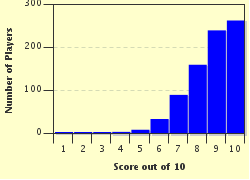Quiz Answer Key and Fun Facts
1. This event occurs when the moon passes between the Earth and the Sun. The sky grows dark, and, for a few minutes, day turns into night. To primitive peoples, this event can be very frightening. What am I describing?
2. Almost everyone has seen a meteor, or "shooting star," at one time or another. But at certain times of the year it's possible to see large numbers of meteors. What do we call these annual meteor displays?
3. Stars live a long time, but not forever. Most stars quietly burn out, but if a star is massive enough, it may explode and become bright enough to be seen even during the daytime. What do we call one of these massive explosions?
4. Another phenomenon that terrified ancient people was the appearance of one of these objects in the sky. Bright, with long tails, they were thought to be the harbingers of war and destruction. A famous one, named for Edmund Halley, returns about every 75 years. What am I describing?
5. Sometimes planets may appear very close together in the night sky. What is the term for this event?
6. On March 10, 1982 a very rare event happened. All of the planets and the moon were lined up on the same side of the sun. What is the name for this kind of planetary alignment?
7. Many stars in the night sky that appear as single specks of light are actually two stars too close to each other for us to distinguish, stars that rotate together around a single center of mass. What are these pairs called?
8. Numerous small bodies are found between the orbits of Mars and Jupiter. Some of them were once classified as planets, but now we use another name for them. What is it?
9. We can't really see these objects; we can only observe their effects on nearby stars. They are objects so massive that their gravitational field prevents even light from escaping. What are they called?
10. Another phenomenon that was well known to the ancients is what we now call the "Northern Lights." What is the more scientific term for this eerie light display?
Source: Author
daver852
This quiz was reviewed by FunTrivia editor
CellarDoor before going online.
Any errors found in FunTrivia content are routinely corrected through our feedback system.


